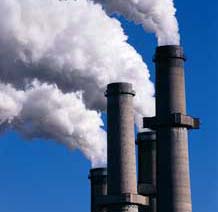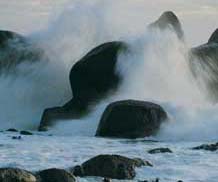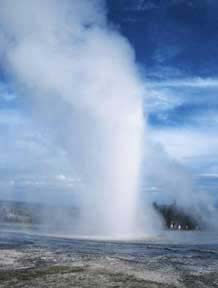Introduction to carbon capture and storage (CCS)
At BGS we research the ways in which CO2 can be stored in rocks under the ground.
Carbon capture and storage (CCS) is one of the ways that Britain and the world can maintain electricity supplies and economic growth while not changing the atmosphere and the climate.
CCS involves capturing carbon dioxide (CO2) from large emission sources and then transporting and storing or burying it in a suitable deep geological formation. CCS can also mean the removal or scrubbing of CO2 from the open atmosphere followed by storage in a deep geological formation.
Why do we need to store carbon dioxide?
Learn about the causes of climate change and the greenhouse effect, and how mankind is accelerating the process as a result of a rapid rise in world population and the need for energy to power our homes, for transport, and industry.
- What is climate change?
- How does the greenhouse effect work?
- Human influence on climate change
- How do power stations capture CO2?
- How can CO2 be stored?
What is climate change?

Climate change means a long term change in the weather that can be felt or experienced or can be identified by statistical tests on weather measurements. These changes will persist for long periods, typically decades or longer.
Climate change may be due to natural Earth processes (such as interactions between the atmosphere and the oceans; volcanic activity and to changing concentrations of ‘greenhouse gases’ such as carbon dioxide (CO2) in the atmosphere) or due to human activities (e.g. industrialisation, changes in agricultural practice, increased generation of greenhouse gases from fossil fuel combustion).
Oceans and climate change

On a timescale of decades, climate change can result from interactions between the atmosphere and the oceans.
These are very complex and produce oceanic changes such as the El Niño Southern oscillation, the Pacific decadal oscillation, the North Atlantic oscillation, and the Arctic oscillation. These oscillations and their impacts on climate owe their existence, at least in part, to the different ways that heat is stored and moves in the oceans.
Volcanic activity and climate change

Volcanic activity (volcanism) moves material and gases (including greenhouse gases) from the depths of the Earth to the surface. Volcanic eruptions, geysers and hot springs are all part of the volcanic process and also release particulates such as ash into the atmosphere.
A single eruption of the kind that occurs several times per century can affect climate, causing cooling for a period of a few years or more.
The eruption of Mount Pinatubo in 1991, for example, affected the climate substantially by lowering global temperatures by about 0.5°C, mainly by reducing the transparency of the atmosphere.
Much larger eruptions occur only a few times every hundred million years, but can reshape climate for millions of years and cause extinctions of life. Dust ejected into the atmosphere from large volcanic eruptions affects temperature only temporarily.
Volcanoes also release carbon dioxide but estimates suggest that human activities generate more than 130 times the amount of carbon dioxide emitted by volcanoes. Further information on monitoring volcanoes see Volcanology.







